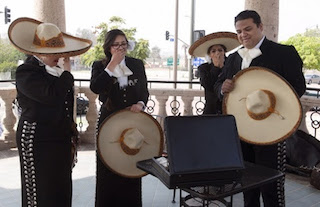 One of the most challenging issues confronting reality television productions involves the processing of camera media. Productions often employ large numbers of cameras of different types resulting in dozens of hours of footage that need to be transcoded before editorial teams can begin their work of whittling it down into scenes, stories and episodes. It’s not uncommon for it to take two days or more to transcode footage from a single shoot day, a costly delay that productions would like to avoid.
One of the most challenging issues confronting reality television productions involves the processing of camera media. Productions often employ large numbers of cameras of different types resulting in dozens of hours of footage that need to be transcoded before editorial teams can begin their work of whittling it down into scenes, stories and episodes. It’s not uncommon for it to take two days or more to transcode footage from a single shoot day, a costly delay that productions would like to avoid.
Post-production technology supplier QSR Systems has come up with a unique solution to this dilemma. The company has developed a proprietary service that significantly speeds up the process of transcoding camera media. Based on hardware and software originally developed for rendering computer animation, QSR’s system performs transcoding through a parallel processing operation. Transcoding is accomplished in a fraction of the time of other methods with the gap between production and editorial reduced accordingly.
“We can transcode media from an entire shoot day in a matter of a few hours,” says QSR Systems president Rob Cloyd. “It’s a big time savings that enables shows to begin the creative work of editing a day or more sooner.”
QSR is currently providing its high-speed transcoding system to the new CBS reality series The Briefcase as part of a complete editorial workflow package. Created by David Broome and produced by 25-7 Productions, the show is shot on location at sites around the country with more than a dozen cameras used in production, ranging from Sony F55s to GoPros.
Each shoot day results in 1 - 1.5TB of camera media. Crew in the field collect all that data, create back-ups and send copies to the show’s editorial team in Los Angeles. There, the files are logged but instead of being ingested and transcoded individually, the entire day’s shoot, 400 files or more, is added as a group to the high-speed transcoder.
“The transcoder does a couple of things,” says Frank Salinas, the show’s v.p. of production and post operations. “It detects that the files are in the appropriate codec for the camera source, it creates proxies for editorial, and transcodes the media a second time at higher resolution for editorial finishing.”
The high-speed transcoder’s method of processing files in parallel results in significant time savings. “We are able to turn things around a lot quicker with fewer resources and man hours,” Salinas observes. “A process that normally would take 30 or 40 hours is being done in less than ten.”
Assistant editors are able to begin the work of grouping, labeling and syncing footage much sooner. “Forty-eight hours after we’re done shooting, everything is ready for the story department,” Salinas says.
The high-speed transcoder also saves time in editorial finishing through the way it manages metadata. “The system inserts timecode into the metadata for files from GoPros and similar cameras where that information is lacking,” explains Cloyd. “It’s guaranteed to relink during the conform, so there is no more worry over human error. With our solution, the metadata is always identical.”
The result is a more efficient and worry-free path from production to delivery. “Post production has never been so smooth,” says Salinas. “We haven’t experienced any problems with corruption or duplicate files. It’s been rock solid start to finish.”
QSR Systems qsrsystems.com
